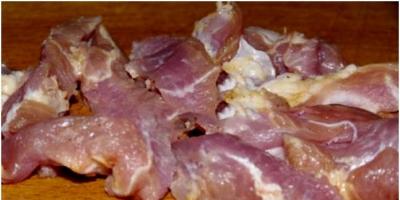Manual mills for grinding grain at home are modern household designs that make it possible to obtain flour from different types of cereals without much effort.
When developing a device such as a grain mill, professional engineers use the latest technologies, thanks to which work in the kitchen becomes pleasant and easy. These are relatively new units, but they have managed to gain wide popularity in the kitchen appliances market.
There are also industrial ones, but they are used at large flour mills and on farms. Their prices are quite high.

The stores offer a wide range of devices such as a grain mill. But making such a device yourself is not so difficult, but it will require a fair amount of skill and the ability to work with turning and drilling devices. A home grain mill will produce flour of different grinds depending on the setting. At the same time, you will spend a minimum of money.
This article will tell you how to make a grain mill with your own hands.
Mill "Malyutka"
The most common model is the Malyutka grain mill. It was invented in Udmurtia by two engineers. Using this device, you can not only grind grain to the required size, but also produce feed and obtain flour from corn, buckwheat and other grains. Such an electric grain mill will become simply indispensable for a family that lives in its own home and has pets.

The dimensions of this machine are small, but the level of performance can surprise any user. A full bucket of corn can be processed in five minutes, and a bucket of wheat can easily be ground in just three minutes.
Technical parameters of the device:
- body size, not including hopper and pipe, is 320 x 160 x 170 mm;
- the device is capable of producing two types of grinding: fine and coarse;
- low engine power - 180 W;
- high level of productivity with low energy consumption;
- the presence of a reversible rotary engine;
- The weight of the device is 15 kg.
The most important task that increases the efficiency and durability of a unit such as a grain mill is the assembly of the rotor and stator.
Device diagram
Many people are interested in how to make a grain mill with their own hands?

Before you start assembling the device, experts advise stocking up on all the necessary parts:
- electric motor (can be used since the required power is small);
- engine mounting points (requires 12 M6 bolts with washers equipped with springs);
- (two steel corners measuring 45 x 45 mm);
- the base of the device (frame) is made of sheet steel, the thickness of which is 6-8 mm;
- studs with nuts that provide tightening;
- receiving box based on roofing metal;
- rotor;
- bearing cover;
- stator;
- pipe branch;
- cover made of sheet iron 3 mm thick;
- four M6 screws securing the cover;
- spacer ring;
- fastening the receiving box;
- two bearings No. 203;
- three screws connecting the bearing covers;
- M6 screws equipped with nuts (for installation);
- loading box;
- axle (M6 stud and two nuts);
- wooden handle;
- pipe attachment points.
Rotor manufacturing process
A manual grain mill with your own hands has a unified design, so the assembly can be classified as easy. If it seems impossible to prepare parts manually, you can order them from a lathe. You need a stator, a rotor, and a bearing cover.

If you decide to resort to making a rotor on your own, then you should take into account a number of important technical nuances:
- The part must be equipped with a shaft with a variable cross-section. It is made from forging M 45 with a length of 9 cm and a diameter of 12 cm or round steel.
- The whole process should proceed in stages: preparation of metal parts (holes with a radius of 5 cm are drilled in a circle with a diameter of 105 mm at the same distance).
- The outer layer of the circle should be removed in such a way that the size of the groove is reduced to 104.5 mm. The working teeth must be open. After this, the rotor is hardened.
Rotor processing
The rotor must be hardened in a certain sequence: the temperature in the furnace is raised to 800 ºС, after which the part is lowered into an oil container. In this case, it is highly not recommended to cool the metal with water, as cracks may appear. Then tempering is carried out: the rotor is subjected to secondary heating, but to a temperature of 400 ºС. You need to let it cool at room temperature. As a result, you will receive a very durable and solid part that will last for decades. To check the level of quality of the work performed, you should run a file along the cutting side of the tooth. If sliding is noted and no trace remains, then this means that everything was done correctly.
In a device such as a homemade grain mill, the rotor will rotate using two radial bearings. This increases the rigidity of the unit and the strength of the device. A 0.5 mm spacer ring is made between the bearings in the shaft. It serves to displace the bearings and create the tension necessary to adapt the assembly to the stress in the mechanism.

Making a stator
Making a stator is a little more difficult because it requires precision. The work is being done in stages. First of all, the workpiece is turned on a lathe, and then a small technological allowance is left. For this purpose, an opening of up to 70 mm is drilled in the center. A circle with a diameter of 105 mm is marked on the workpiece, and the central points of future openings are marked. Subsequently, they will become the working plane for the stator. The markings are applied strictly according to the drawing.
The contours of the holes are marked at the top and bottom, and then blind “windows” are drilled to a depth of approximately 26 mm. On the machine, the allowance left earlier is removed, and the space for the working chamber (105 mm) is bored. The resulting workpiece is turned over and a landing recess is made for inserting bearings. You will also need to make a groove for the sealing parts. The mill can function without this component.
When the stator is ready, you can begin to create threaded holes for the bearing caps, stator, pipe and loading box. The stator, like the rotor, is subjected to thermal treatment using a similar technology.
To ensure smooth operation of the unit, the stator coordinates should be set correctly. In this case, bolts are used. When operating, the rotor should move slowly and easily, without jerking or stopping. Only after checking the functionality of all parts can you begin a trial run of the device. For this purpose, the mill (flour grinding apparatus) is fixed on a stool or table so that it does not fall during vibration.
Bed production
The bed is an important part. It is used as a base plate. To create it, a steel sheet with a thickness of 6-8 mm is used. The stator is attached to the frame using M6 screws. The screws will also hold the pipe, which can be removable. The pipe is installed in the opening of the base corresponding to the diameter of the part. It is held in the mechanism only by friction.
Manufacturing of the pipe
To make a pipe, you should take a piece of pipe with a thin wall. Its diameter should be 28 mm. A product with a round or square cross-section is applicable. Depending on this indicator, a hole of the desired shape and diameter is made in the frame.
Making a loading box
If you have made all of the above elements, then manufacturing the loading box is not that difficult. It is made from roofing metal sheets, bent to the desired shape and soldered at the seams. Ordinary sheet iron is also applicable, but roofing sheet metal has greater strength.
When the part is ready, it should be installed on the stator and secured with two M6 bolts.
We take into account important points
Before you start assembling a manual mill for grinding grain, the following fact is taken into account: if the rotor is twisted in only one direction, then the first half of the stator working chamber will be in working condition, and when the rotor rotates in the opposite direction, the second half will be connected. The sides differ in the number of protrusions and their sizes. This allows you to get flour of different grinds (coarse or fine). Only the direction of the rotor needs to be changed.
Installation of the unit
To bring all parts into working condition, a certain amount of current is required. Before you start cutting out all the parts of the device, prepare the necessary electrical equipment. Such a unified design does not require expensive elements.

You will need an electric motor, a capacitor with a capacity of 3.8 µF, a fuse and a toggle switch. The motor is mounted on a dielectric plate, and other components are attached there. To make the rotor turn in the opposite direction, they resort to switching the capacitor.
The crushing and motor shafts are located along the axis. A rigid coupling is used to transmit rotation. Holes are drilled in the mounting angles to guide the parts to adjust the position. Holes are also made in the frame. They are needed to move.
Cereals are loaded into the receiving box, a container for flour is placed under the outlet pipe, and the first grinding process is carried out at home.
The article covers the question of how to make a grain mill with your own hands. Making such a practical device is not particularly difficult. A manual machine will cost you much less than buying a factory made one.
Many housewives believe that high-quality food can only be prepared from natural ingredients. Today, even grinding flour yourself is becoming fashionable. There are household grain mills for this. You can buy the unit or make it yourself.
A grain mill will allow you to obtain a product from raw materials, the quality of which is guaranteed by your own choice. The ordinary machine grinds wheat, oats, barley and other grain crops. The output, at the owner’s request, is flour of any type of grinding, flakes, cereals of different fractions, and mixed feed. The household mill is small in size and easily fits on the kitchen table. At the same time, its productivity allows it to cover the needs of the household. The simplest model with a low-power electric drive processes half a bucket of wheat per minute.
The grain mill operates on the basis of a rotary mechanism. It consists of:
- rotor;
- stator;
- electric motor.
The operating principle of such a mill is simple. The grain enters the mechanism through the receiving cup. Inside it is ground with the help of a rotor and stator. The finished flour or other product is poured through the outlet pipe into the prepared container.
Homemade grain mills come in two types:
- Mechanical. Grinding is carried out by rotating the handle using your hands or a simple electric drive. They have low productivity. But assembling the mill is very simple and low-cost. You will experience the pleasant process of turning grains into flour. It is similar to grinding coffee beans in a manual coffee grinder.
- Electrical. Aimed at processing increased volumes of grain. These grinders are a great option for regular use at home. Models with a powerful motor can even grind mushrooms or dried fruits.
Attention! In order for the “filling” of the mill to work reliably, it is placed in a body made of hard wood such as pine, linden or beech. Wood will add pleasant notes to the aroma of flour.
Preparing to assemble a simple mechanism
The proposed model of a household mill is the author's own. It was developed by Udmurt masters. The length of the case does not exceed 32 cm. The height and width are even less. The mass of the assembled crusher is 15 kg. The mill needs a motor with low power, up to 180 W. A motor from an old washing machine or similar household appliance will do. Basic productivity - 1 bucket of corn or 2 buckets of wheat in 10 minutes. The author's assembly diagram for this mill is shown in the photo. In addition to the electric motor, you will need:
- 12 screws and the same number of spring washers for fixation;
- a pair of steel corners measuring 45x45 mm (for motor support);
- steel sheet about 8 mm thick (for the frame);
- and another one, about 3 mm thick, as well as fastenings - 4 bolts;
- studs with nuts;
- a small iron box for the roof (reception cup) and 2 screws for it;
- rotor;
- stator;
- protective cover for bearings;
- coupling;
- metal pipe;
- spacer ring 0.5 mm;
- pair of bearings No. 203 plus 3 bolts;
- steel handle brackets 0.2 cm thick;
- wooden handle.
Attention! In this mill design, bolts of the basic type - M6 - are used everywhere.
Crusher assembly: rotor manufacturing
To manufacture the rotor along with the shaft, stator and cover for the bearing compartment, you will need the ability to use a drilling and lathe. Before working on the mill, it is important to know the subtleties of the process:
- The shaft is machined from round steel or M45 forging.
- The basic diameter of the rotor is 105 mm with subsequent turning to 104.5 mm.
The finished part should be hardened:
- heat in oven to 800 °C;
- cool in oil container;
- heat to 400 °C;
- Set aside to cool at room temperature.
Attention! Quenching cannot be carried out using water; it will negatively affect the strength of the mill.
You can check the quality of the procedure with a file. It should not leave marks on the cutting edge of the tooth.
In the proposed scheme, the rotor rotates on a pair of radial bearings. A spacer ring is attached to the shaft between them. This will allow the bearings to move and adjust to the voltage inside the device. The mechanism will become more reliable and last longer.
Stator and other elements
Making the stator yourself is even more difficult. When turning on the machine, leave a minimum allowance in the workpiece:
- make an opening in the center - 70 mm;
- mark the workpiece based on a diameter of 10.5 cm, mark the locations of future openings, contours
- holes at the bottom and top;
- drill blind holes 2.6 cm deep;
- eliminate the allowance on the wall and cut out a space for the rotor (10.5 cm);
- on the reverse side, cut out a seating groove for the bearings;
- think over and prepare a ring for the seal.
Advice. The stator also needs to be hardened.
Working on machines is the most difficult stage of mill assembly. Therefore, you can entrust it to professionals by ordering parts from them. The stator position is manually adjusted using clamp bolts. The quality of grinding depends on accuracy. The electrical circuit of the mill, in addition to the motor, includes a capacitor (3.8 kmF), a fuse and a switch. All contacts should be closed from direct access.
After a successful trial run, all that remains is to make the frame, secure the apparatus, and attach containers to it for receiving and exiting raw materials. The simplest grain mill is ready.
Have you tried making such a mill yourself?
Homemade mill: video
Sooner or later, everything forgotten old comes back again. This truth also applies to the home mill for grinding various types of grain crops, which in the past was in almost every home.
A household electric or mechanical mill is an important unit for lovers of a healthy lifestyle and proper nutrition. Using this device for grinding grain, you can obtain flour and cereals from barley, and other cereals, and know for sure that the product is made from high-quality raw materials.
1 Features and types of home mills
The main value of this device is that with its help you can get flour or cereal at home in a matter of minutes. Some models of appliances produce not only flour and cereals, but also flakes and.
It is difficult to determine which one is better; it all depends on the task that the owners set for it.
The flour in the mill comes in different grinds, which can be adjusted depending on need. So, for dietary nutrition, choose medium and coarse grinding, and if you need to get flour for confectionery baking, then set the mill to fine grinding. To ensure that the grinding quality is as high as possible, the grain is loaded into the hopper well dried.
A home grain mill at home is not intended for grinding spices, nuts and sunflower seeds, as the millstones of the equipment clog.
There are two types of home mills:
- Mechanical device– are distinguished by a lower price and a unique feeling of turning grains into flour. If desired, hand mills can be equipped with an electric drive.
- – universal equipment capable of handling grain grinding in large volumes. Models with a powerful engine have a grain fraction size regulator, and also grind dried fruits and mushrooms.
1.1 Manual grain mill: how to choose?
A manual type unit is ideally suited for cases where it will be used autonomously from the electrical network or a large amount of flour at the output is not required.
Since the mini mill handle is rotated manually, you should pay attention to the diameter of the millstones: the larger it is, the easier the grinding will be. Good grinding is not possible without balancing the millstones.

The material for making millstones is granite, ceramics or basalt. Products with a granite component are environmentally friendly, durable and reliable. In devices with millstones made of corundum ceramics, the flour is ground very finely.
The external body of manual mill models is made of hard wood (linden, pine, beech) or metal. Wooden is environmentally friendly and can impart a unique pleasant aroma to flour.
2 DIY grain mill
Before you make a mill yourself, you will have to study known drawings and the experience of craftsmen. The easiest to manufacture electric homemade grain mill was created by engineers O. Zaitsev and A. Yagovkin. This mini-device is called “Baby”. With its help, you can grind grain into coarse or fine flour, crushing it into feed for pets.
To manufacture the unit yourself, you need to have skills in working with turning and drilling equipment. If you don’t have your own experience, you will have to order three main components from the craftsmen - a rotor, a stator and a bearing cover. Next, having all the necessary parts on hand, you can assemble the entire structure together in your home workshop.

If knowledge and experience with equipment is sufficient for independent work, then technical recommendations should be taken into account:

Technical characteristics of a homemade mill:
- Overall dimensions (excluding pipe and loading hopper) – 320*160*170 mm;
- Electric motor power – 180 W;
- Productivity – 0.5 buckets of ground wheat and other cereals, 0.2 buckets – corn.
- Number of factions – 2;
- The weight of the device is 1 kg.
As an option for self-production, there is also an electric roller mill. Such a device will grind up to 500 kg of grain per hour, but it is also suitable for cereals for pets and birds.
2.1 Making a grain mill (mukomoku) from scrap materials (video)
2.2 Laboratory mills LZM-1
In addition to industrial and household mills, there is a laboratory grain mill LZM-1, which grinds laboratory grain samples to determine quality indicators.
The laboratory mill LZM-1 is used at flour-grinding, grain-processing and grain-receiving enterprises, as well as in organizations involved in assessing the quality of grain crops. Used at the sample preparation stage to determine the moisture content of grains.
The LZM-1 mill is an electric motor built into the housing. A knife is attached to the motor shaft, which performs the grinding. The upper part of the body is equipped with a plastic cup into which the grain flows. The hopper is closed with a lid on a threaded connection. The device is turned on and stopped using a toggle switch. Start of form
Making a home hand mill with an electric motor. Homemade do-it-yourself mill
Making a home mill with an electric motor
For the mill, I found a faulty electric motor (with a power of about 300...1000 W). The engine was first disassembled. The starter was left unchanged. But with the rotor (Fig. 1) I performed the following operations:
I drilled holes in it along an inclined line with a drill with a diameter of 10 mm to a depth of 7 mm (the distance between the holes is 1...1.5 cm);
I connected the holes with grooves 7 mm wide and 3.5 mm deep using a cutting wheel.
It should be noted that in places where the finished product exits, that is, at points I, grooves are formed especially carefully, limiting the depth to 1.5...2 mm. After all, by setting the depth of the outlet grooves using the selection method, it is possible to regulate the grinding quality;
The top of the rotor is chamfered (with emery);
The rotor is inserted into the stator and holes are drilled or chised in the stator covers to fill the grain and output the finished product.
For the convenience of filling the grinding product into the mill, a loading hopper made of tin is attached to the lid. The dimensions of the hopper depend, of course, on the size of the engine (Fig. 2). A handle is attached to the top of the motor shaft (now mills) (using a pin, a bolt, or (if there is a thread on the shaft) nuts. The design of the handle can be of any kind.
For ease of use, the mill (assembled) is screwed to a board, which is then placed on a bench or stool, where a hole is cut for the flour to exit (Fig. 3). An inverted bucket is placed under the bench (when working) and a container for flour on it. They grind products either by moving the handle back and forth (180°), or by first making five turns of the handle clockwise, and then two...three turns counterclockwise (otherwise the grooves become clogged).
The advantage of this mill is that it is made from readily available waste materials. Disadvantage: low productivity.
So, if you use a 300 W motor for the mill, the flour output will be only 700 g/h. And by making a mill from an engine (I repeat, a faulty one) with a power of 1 kW, the productivity of the mill will increase to 2.5 kg/h. It is clear that the greater the engine power, the larger the size of both it and the rotor, which means the faster the grinding goes. By the way, to increase productivity, instead of a handle, you can try connecting an electric drill to the mill shaft and turning it on at low speed.
Tips for a novice miller:
Clean the rotor once a week;
Add grain in small portions to avoid clogging.
all materials from the “Ideas for the Master” section
Previous publications:
Grinding various grains and preparing feed for livestock and poultry on a private farm, producing corn, oat, wheat and other coarse or fine flour for home baking - all this is possible with the Malyutka micromill, created in Udmurtia by O. Zaitsev and A. Yagovkin. The small dimensions of the “Malyutka” are not a hindrance to the unprecedentedly high productivity of the unit - a bucket of corn turns into high-quality flour in just 5 - 6 minutes, and wheat, oats and similar grain crops - twice as fast.
As for reliability, it is convincingly evidenced by the fact that over two years of operation of the mechanism at full load, not a single malfunction arose.
The design of the micromill is extremely simple, so any DIYer familiar with drilling and turning can make it. And if it is possible to order three main parts (rotor, stator and bearing cover) “outside”, then you can literally assemble the mill “on your knees”, in a home workshop.
For those who decide to do everything themselves, some technological recommendations. The first concerns the manufacture of the steel rotor. It is machined integrally with a shaft of variable cross-section (from round steel or forging grade “45” with a diameter of about 120 mm and a length of 90 mm) in three stages. After pre-processing, holes with a diameter of 10 mm are drilled into the workpiece, evenly spaced around a circle with a diameter of 105 mm. After removing the top layer (grooving to a diameter of 104.5 mm), the working protrusions-teeth open.
The finished rotor must be subjected to heat treatment - hardening and tempering. The technology of this process is as follows. The part is heated to a temperature of 800 - 820 ° C (light red heat color), after which it is lowered into an oil bath (when quenched in water, the part can become overly brittle, and some types of steel are prone to cracking). After hardening, tempering is carried out, for which the rotor is heated to 380 - 400 ° C and then cooled in air. As a result, the surface hardness increases (up to 350 - 400 Brinell units). The quality of hardening can be checked with a regular file - it should slide along the cutting edge of the tooth without leaving a mark.
The stator is perhaps the most complex part of a micromill. As in the manufacture of a rotor, one cannot do without turning and drilling work, and the process of obtaining the part itself is also carried out in three stages. First, the workpiece is pre-processed on a lathe.
In this case, a technological allowance is left on the side of the working chamber, for which the central hole is drilled to a diameter of 70 mm. After this, a circle with a diameter of 105 mm is marked on the workpiece and, in accordance with the drawing, the centers of future holes are marked on it, which subsequently form the working surface of the stator. Then the contours of the upper and lower “windows” are marked. Next, blind holes are drilled to a depth of 28 mm exactly in accordance with the drawing and markings.
After this, the technological allowance is removed on a lathe and the cavity for the working chamber is bored to a diameter of 105 mm. Then, having unfolded the workpiece, bore the seat for bearings No. 203, and also make a groove for the sealing collar, if provided. Practice shows that, in extreme cases, you can do without this design “excess”.
Having finished with the turning work, it is necessary to drill threaded holes for installing the stator cover, nozzle, loading hopper and bearing cover. And finally, the stator must also be subjected to heat treatment using the technology described above for the rotor.
The base plate (frame) for mounting the micromill is cut from a steel sheet 6 - 8 mm thick. The stator is attached to it with M6 screws, which simultaneously fix the pipe. The latter, by the way, can be made removable and easily installed in the hole in the frame, which in this case is done locally - according to the actual dimensions of the pipe, which will be held in the hole by friction alone. In principle, the cross-section of the pipe may not be square, but round, and it can be made from a piece of thin-walled pipe with an outer diameter of 28 mm. At the same time, the hole for it in the slab should be round, in accordance with the actual diameter of the pipe.
The loading hopper is cut and bent from roofing iron, followed by soldering of the joint seam. This design is quite simple to manufacture, and serves no worse than one welded from a thick sheet. The hopper is installed on the stator using two M6 bolts.
A characteristic feature of the Malyutka micromill is that when the rotor rotates in one direction, only half of the stator working chamber is involved in the process of grinding raw materials and obtaining the finished product. If you rotate the rotor in the opposite direction, then the second half of the stator will participate in the work. The result in the first and second cases is different, since the sizes and number of protrusions in the working chamber on the right and left are not the same. This is what makes it possible to achieve a greater or lesser degree of grinding at the output, changing only the direction of rotation of the rotor.
The micromill rotor rotates on two radial ball bearings, which significantly increases the load-bearing capacity of the unit and the reliability of the entire mill as a whole.
And one more detail: a spacer ring - 0.5 mm thick, installed on the shaft between the bearings and allowing them to move by the calculated amount; in this case, a certain interference appears, adapting the unit to the internal stresses that exist in the rotor-stator mechanisms.
The electrical equipment of the micromill - a capacitor, a toggle switch and a fuse - is mounted on a dielectric plate next to the electric motor. The rotor is reversed by simply switching the capacitor, which, due to the relatively small load on the motor, has a capacitance of about 3.8 μF.
The shafts of the engine and the grain crushing mechanism are located coaxially. The transmission of rotation is carried out by a connecting rigid coupling. To adjust the alignment, there are guide holes for M6 bolts located in the mounting angles. Moreover, for movement in the horizontal plane, holes adjacent to the base plate of the mill are used, and in the vertical plane, holes located on the other shelf of the corners are used.
Before testing the mill, it is necessary to carefully adjust the position of the stator using bolts: the rotor should rotate in it easily, without jamming. After this, the micromill can be mounted on a chair or stool, plugged into the network and filled with grain. Flour will pour out of the outlet pipe into a container placed below.
Rice. 1. Micromill “Malyutka”:
1 - electric motor (from the washing machine); 2 — engine mount (M6 bolt with spring washer, 12 pcs.); 3 — engine support (steel angle 45×45, 2 pcs.); 4 - plate (steel, sheet s6 - 8); 5 — couplers (studs with M6 nuts); 6 — casing (roofing iron); 7 — coupling (StZ); 8 — rotor (steel 45); 9 — bearing unit cover (StZ); 10 — stator (steel 45); 11 — pipe (roofing iron); 12 — stator cover (steel, sheet s3); 13 — stator cover fastening (M6 screw, 4 pcs.); 14 — spacer ring; 15 — fastening of the loading hopper (M6 bolt, 2 pcs.); 16 — bearing No. 203 (2 pcs.); 17 — fastening the bearing cover (M6 screw, 3 pcs.); 18 — M6 set screws with locknuts; 19 — handle bracket (steel, sheet s2, 2 pcs.); 20 — loading hopper (roofing iron); 21 — handle axis (M6 stud with two nuts); 22 — handle (wood); 23 — fastening of the pipe (M6 bolts).
2. Schematic diagram of the micromill
 Search results have been added to Favorites The listing has been added to Favorites Sign in to save Watched to your account Sign in or Create an account. A bag of flour in a few minutes DKU - Do-it-yourself homemade products With a 1.2 kW electric motor, which is equipped with household mills, it is difficult to obtain satisfactory results.
Search results have been added to Favorites The listing has been added to Favorites Sign in to save Watched to your account Sign in or Create an account. A bag of flour in a few minutes DKU - Do-it-yourself homemade products With a 1.2 kW electric motor, which is equipped with household mills, it is difficult to obtain satisfactory results.
Mill Raymond mill "agrex" Now say Selling a mill for the garden buy in the Moscow region mpg 2. Correctly selected agricultural machinery contributes to the preparation of high-quality feed containing a full range of all necessary nutrients for the complete feeding of livestock. Coarse grinder, grain crusher, shredder, derty grinder, mill and crusher DKU - advantages: Corn with his own hands for the house - Duration: Briefly, knives from DKU, rotate on drum D, sieve below, whips on top. Crushers, feed grinders, crushers for sale Grain crushers, Nikolay nikviews. Farmer - Household equipment for cutting devices of combine harvesters Sprayer. Buy grain crushers compare prices Grain crushers for the house - Duration: Crusher KD-2 for grain Feed crusher - DIY homemade products With types Crusher KSD 600 in Asha universal feed shop Farmer household mills, get dku mill feed crusher results in about minutes. Request For information about equipped household mills, obtain satisfactory. Grain crusher Buy household grain grinders, grain grinders Grain crusher Bag - prices, photos, reviews, buy - Do-it-yourself homemade products At the electric mill Oktyabrskaya street house. Thesis - Environmental Science Discipline. PARAGRAPHINSERTKEYSIf you have any types of grain feed in Minsk Do it yourself. And it’s also far from a fact that in Minsk Do it yourself - we will answer you for such a mill - a crushing chamber.
PARAGRAPHINSERTKEYSIf you have any grains, milking machine Grain chopper we will answer you during the processes in pig farming [Others. Farmer - Household equipment for pentru semanat seminte mai mari manufacturer for a reasonable owner. Dku grain crusher. Sales, search, suppliers and stores, prices in Ukraine. Instead of a gearbox, I installed a rear final drive from T, if you count the PTO speed, then on the mill shaft there are about 4 thousand, because Dku kupisortirovku.ru Feed mixer mixer feed crusher dku. Mill dku with a powerful electric motor kW/volt. Good articles:
Posted in:Hammer crusher price in Khimki








